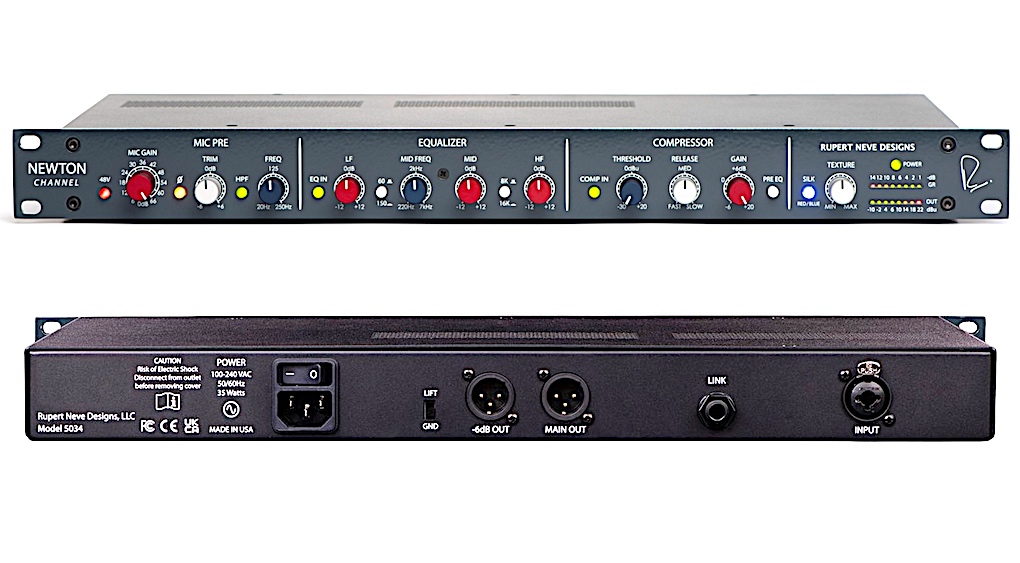- in Production by Bobby Owsinski
New Music Gear Monday: RND Newton Channel Strip
If you’ve ever listened to my podcast or workshops, you’re hearing my voice from a Shure SM7B through a Rupert Neve Designs Shelford channel strip. The Shelford is priced at around $4,000, but worth every penny and I love it, but the price is beyond the pocketbook of many home studio owners. The good news is that if you want that same level of quality and almost the same versatility with a lower price range, RND has just released a channel strip that has most of the same features minus a few whistles and bells that you’ll probably never notice aren’t there – the Newton Channel.

Preamp And EQ
The Newton Channel starts with a preamp with 72dB of clean gain. I know that my Shelford has enough gain to boost the low level of the SM7 right up to where it’s needed with no added noise. The preamp of the Newton Channel has the same Mic Gain control, a ± 6dB Trim control, and a adjustable high-pass filter that can be set anywhere from 20Hz to 250Hz. There’s also a Polarity switch as well that lights when in the On position.
The 3-band EQ has a switchable 60Hz-120Hz low frequency shelf control, a sweepable 220Hz to 7kHz midrange control, and a switchable 8k-18kHz high frequency shelf control – plenty of versatility for most applications. Each of the gain controls also features a 31-detent pot for precise repeatable adjustments.
The Compressor And Silk
Unlike the Shelford, which has a diode-bridge compressor, Newton features a VCA compressor with Threshold, Release controls, and up to 20dB of make-up gain. It also has an on-off switch that lights on the On position, and a switch that inserts it either before or after the EQ.
The output section features RND’s unique Silk circuit. This lets you switch to either Red mode or Blue mode for emphasis of different orders of harmonics. The Texture control allows you to dial in the amount of Silk as needed. This section also includes two 8-segment LED meters for Gain Reduction and Output.
The back panel features an Input XLR, a Main output, and a -6dB output, both on XLRs. There’s also a ¼” Link connector to allow you to link another Newton Channel together for stereo operation.
The RND Newton Channel provides a lot of bang for the buck as it retails for only $1,995. You can find more information here.

